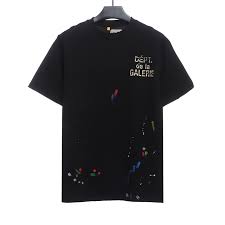Replica clothing design has undoubtedly become more popular, which can be attributed to a number of reasons surrounding the pricing models and market demand related to consumer behavior. Monthly reports suggest the global replica market is worth near to $1.8 billion, as more people want the luxury but at cheaper prices. The price gap between authentic designer items and a similar quality copy is large, for example an real Chanel bag could cost circa $5k while a look alike with almost the same characteristics would be sellable at $150. The large price gap is what brings in cost-conscious consumers who want to have the luxury brand cachet without paying a lot of out their pocket.
The psychology of consumers too is critical. With this trend showing no sign of abating as fashion icons and other celebrities continue to parade the latest high-end creations, it is becoming increasingly difficult for average shoppers not to chase. A 2023 study by the Fashion Law Institute found that around 60% of age18-25 year old respondents were willing to buy replicas for affordably staying in fashion. Fashion counterfeiters are smart and astute — they knew fashionable demographic was one that valued visual appearances of top branded goods over real, tangible authenticity.
Along with cost and social elements, the wonders of manufacturing tech has made a big difference when it comes to quality on replicas. Given precision machinery, access to high-grade materials and sophisticated assembly techniques made available in today day and age manufacturers are able to produce items with very close specifications compared the authentic articles. The closest detail of a good fake handbag is the stitching (replica makers have proven that they can make as few stitches per inch to reduce production costs or increase one stitch at certain key stress points for exact reinforcement). His near perfect imitation of the genuine article, makes it even harder for the untrained eye to spot one of these sweeter-than-the-real-thing impostors.

It also point to the influence social media has on market trends. More often than not, influencers and communities talk about where to buy "good replicas," but also include performance reviews in terms of lookalike quality, lifespan, size accuracy etc. It has made TikTok and Instagram primary locations for replica enthusiasts, who have raked in millions of views posting photos with “dupes,” or affordable alternatives. The digital environment further stoked interest in replicas, teaching people that they were its own culture and a smart financial choice.
You have to also consider how economic instability played a role. The most obvious way is if people buy less stuff, especially when a recession hits or if the future looks financially uncertain. Those who could perhaps afford full priced goods of the finer qualities often compromises, living their aspirational lifestyle on a stretched budget. The International AntiCounterfeiting Coalition (IACC) saw a dramatic 15% sales spike with replicas during the financial crash of 2008, according to previous years' records. The body also points out that the luxury brands tend to suffer from lower sales during major recessions and that with these, there is a boon in replica markets.
And in this landscape, the idea of there even being something called “brand equity” is starting to get a little squishy. Originally, a real luxury branded article attested to its owner's success and genuine nature — counterfeit acceptance is representative of updated consumer values. In the digital age, buyers now value aesthetic appeal, practicality and cultural worth ( social status/ community ) over any property only a genuine designer label can deliver. The changing mentality is reflected in the comments of prominent fashion forums, where users refuse to accept that spending a premium just for a logo does not cut it anymore when there are comparable quality goods available.
View more details at Clothing Designer Replicas.
Between the cost of these products, consumer attitudes that have been changing over time and how good rep items are getting--it's a natural progression to continue having many people interested in this space across such diverse demos/financial statuses. Because so long as consumers covet luxury fashion from afar, the market will exist for lower-cost substitutes — and replicas have a future that stretches far beyond any enforcement issues.